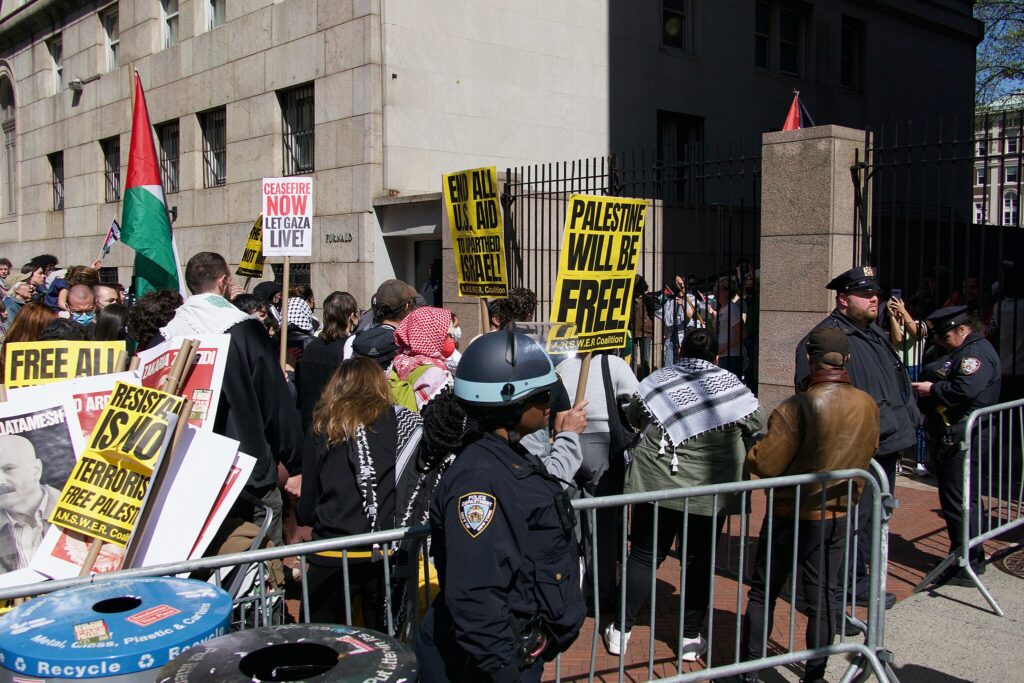Midnight in the Ivy Garden

No one, at least to my knowledge, has been more consistently thoughtful — and therefore insightful — about the current “crisis” on college campuses than Timothy Burke. In his most recent post, he wonders what the college presidents think they’re doing:
But I’m trying to think about what it looks like inside the room where university presidents and their cabinets are sitting at the moment that they decide to bring the police into play or decide to suspend and expel students en masse or decide to cancel graduation ceremonies or decide to hold classes virtually rather than finish out the semester. I’m trying to understand why Minouche Shafik thinks she can do anything that will satisfy Elise Stefanik. Or why Shafik doesn’t understand that she is prolonging and intensifying the enormous and deliberate distraction this whole issue is providing the GOP, who have no genuine or deep-seated concern about anti-semitism or the security of elite universities but are straightforwardly chasing anything that will change the political momentum in their favor before November.
Burke lays out some lessons. They’re all worth reading. But I want to highlight a few of them.
The first echoes a number of conversations that I’ve had recently with peers, including some who are administration-adjacent:
This is the consequence of the institutionalization of ‘safety’ as a pre-eminent discourse about social justice on campuses. Here is the one place where some critics are right to say that this is the campus left being hoisted on its own petard. I have been worrying about this point myself for a long time—I particularly raised it during some protests here on my own campus in 2013, where students were demanding a much more aggressive, top-down response from the college administration to complaints about discrimination and micro-aggressions by privileging the language of safety. I understand the difference between then and now, between the cases, but it should just be understood that empowering an institutional apparatus to act assertively following an open-ended logic is always a dangerous move. But it’s not mostly a cynical move on the part of administrations, either—many are trying to do right by the concept of safety for everyone because they really have embraced that idea. And because administrations in higher education have learned to speak an almost-utopian language about such ideas—to promise something like safety for all with little care for the real-world trade-offs involved, or the competing values that weigh against it.
To paraphrase a friend: universities want to a) ensure that students feel ‘safe’ and ‘secure’ in their identities, b) allow protests, and c) maintain academic freedom. With a lot of care, they can do two of these, but they can’t do all three. So what we’ve seen is a lot of ad hoc decisions being driven by cross-cutting pressures from donors, students, politicians, and the media.
It would be much better, to say the least, to have clear policies that are consistently applied.
So why don’t we get that? Burke offers, inter alia, one possible explanation:
Equally, I’ve found that administrative leaders increasingly feel the need to defend the formal prerogatives of their leadership, both for themselves and as a way of establishing precedent. That becomes the principal value they are defending in certain kinds of confrontations: the right to be the person who decides what will happen. The oddity of this insistence in this particular moment is that leaders at Columbia, NYU, Vanderbilt, USC and elsewhere don’t look like they’re defending their autonomy as leaders, their prerogatives to make decisions: they look weak, they look mostly like they are appeasing hostile outsiders who have no intention of being appeased. Here the need to be “the decider” is really leading them astray, because they’re in effect doing the exact opposite.
Burke also notes that:
I’ve found that over the last two decades, it’s become harder and harder for most administrators to see protest as a pedagogical occasion. Or in the case of certain students, professional development. When I first started as a professor that seemed like a much more common insight—as a very junior professor here, I once sat with a former president here and several colleagues in a big circle with students who were highly aggrieved about what they believed was a defacing of a space set aside for intercultural understanding, and we all treated the discussion like a classroom conversation, patiently untangling their demands and gently challenging their understanding of what had happened. The former president and several other administrators completely understood that the moment wasn’t something to manage or make policy about, but a teaching moment. For whatever reason, that frame has just become very hard to access inside decision-making conversations in these kinds of moments.
My sense of the current protests is that many, including professors, aren’t particularly interested in such a conversation. It’s also much harder to do this kind of thing at a large university than at a small liberal arts college. But I think Burke might still be on to something.
Anyway, read the whole etc.


